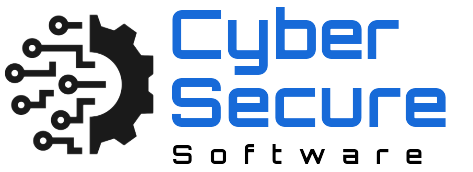Cybersecurity Solutions
- 1. Two important aspects of Cyber Security:
- Constantly updated threat intelligence and visibility through real-time monitoring allow our advanced systems to identify potential vulnerabilities and cyber threats before they become a problem. We prevent attacks from disrupting your operations with automated alerts and responses.
- 2. Protecting Your Data: Detect and Encrypt
- We use robust encryption standards to protect sensitive data in motion and at rest. By implementing our solutions, organizations can reduce the risk of sensitive information such as customer details, intellectual property, and business financial information from being accessed.
- 3. Network Security:
- Firewalls, intrusion detection systems (IDS) and virtual private networks (VPN) protect your infrastructure with our network security solutions. Unauthorized Access: We inhibit unauthorized entry from outside or inside by implementing measures to minimize the risk of intrusion, enhancing network integrity.
- 4. We also believe a much improved response and recovery would have been at hand if lessons were learned from past events.
- We provide rapid incident response in the event of a breach, helping to mitigate damage and restore your systems as quickly as possible. We also provide disaster-recovery planning and data backup services to guarantee business continuity in the event of an attack.
- 5. Risk Management and Compliance:
- Industry compliance: We help businesses meet specific compliance procedures such as GDPR, HIPAA and ISO standards. We help find and address these vulnerabilities through regular risk assessments and audits to meet compliance with regulations.
Software Development
- 1. Custom Solutions:
- Software solutions are tailored according to the needs of the business and the user. Whether it is a web application or mobile app or any enterprise software, custom development makes the product tailored according to your need.
- 2. Agile Methodology:
- Agile Software Development Best Practices Many software development teams areImplementing Agile methodology, which promotes iterative development, continuous feedback, and collaboration. This method provides greater flexibility and quicker delivery, so that the end product satisfies users’ needs as they develop.
- 3. Front-End and Back-End Development effective storytelling and content creation.
- Cross-Functional: The software development lifecycle involves back-end (server-side) and front-end (what users see and interact with). They work in unison, efficiently and cohesively, to provide the best experience possible for the user.
- 4. Security and Performance:
- With the rise of cyber threats, security is one of the most important issues in software development. Development teams use secure coding, data encryption, and other safeguards to make certain that applications are resilient to attack. Reinforcements of performance optimization are also essential for software to run smoothly, even in the event of high demand, and ensuring a frictionless experience for end users.
- 5. Integration and Scalability:
- Software that is built today needs to integrate with different systems and platforms, starting from cloud services to APIs. This means proper planning for seamless integration across the technologies in use. Another important consideration is scalability, particularly for expanding businesses. When the number of users or data is growing, software should perform well regardless of the performance degradation.
IT Consulting
- 1. Strategic IT Planning:
- Assessing an organization’s existing IT ecosystem, understanding its strengths and weaknesses, and creating a strategic plan that maps to business goals.
- Tech Roadmap: Preparing a complete roadmap for implementing new technologies, upgrades, integrations, etc., to acquire long-term growth and flexibility.
- 2. System Integration:
- Seamless Integration Ensuring that different technology systems, applications, and platforms function as a cohesive unit This means implementing new solutions and integrating them with existing systems to streamline processes and ensure smooth data flow.
- Tailored Solutions: Creating and implementing bespoke solutions or applications designed to meet particular business requirements and improve overall effectiveness.
- 3. Cybersecurity And Risk Management:
- Security Assessment: The process of detecting vulnerabilities and threats within an organization’s IT ecosystem.
- Risk Mitigation: They may adopt security solutions that reduce risk, such as encryption, access control or threat detection systems to protect sensitive data.
- 4. Cloud Services:
- Cloud Architecture: Recommending the most suitable cloud architecture for your organization (public, private, or hybrid, etc.).
- Migration & Management: Helping with the migration of data and apps to the cloud, as well as ongoing management and optimization.
- 5. Technology enhancements and optimizations:
- Performance Enhancement:Reviewing and upgrading current IT solutions to improve performance, decrease downtime, and boost overall productivity.
- Implementing Latest Technologies: Keeping up to date with your businesses needs and recommending and providing technology that best matches.
